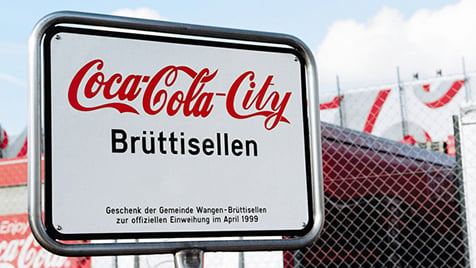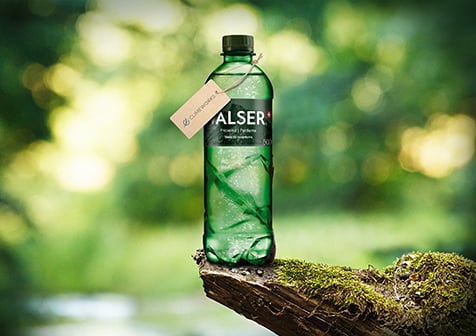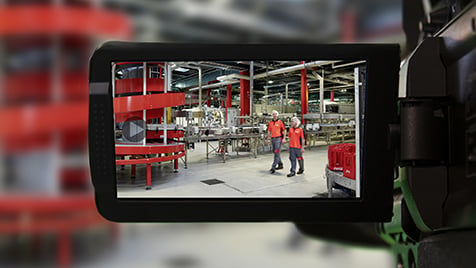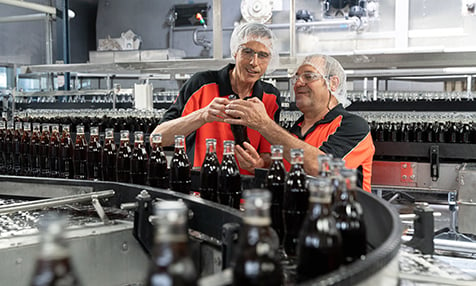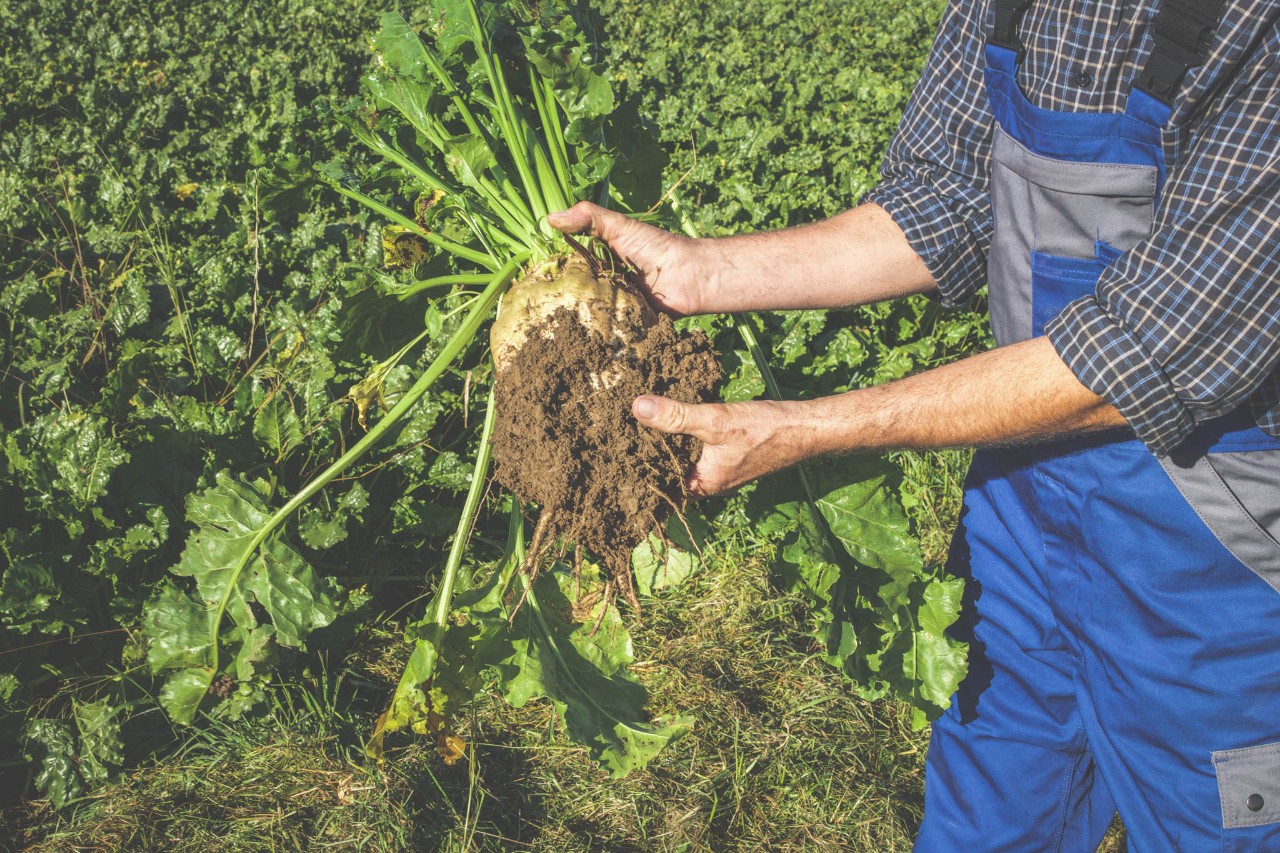How beets produce sugar
The beets were sown in March and have received plenty of tender loving care since. Farmer and beets strive towards the same goal: to produce as much sugar as possible. Harnessing sunlight and CO2 through its leaves by way of photosynthesis, the plant produces oxygen to be released into the atmosphere, as well as sucrose which we also know as sugar. The beet transports the sugar from the leaves to the roots where it gets stored as an energy reserve in form of a tuber. For leaner times, so to speak. The more the beet flourishes, the less energy it needs to draw from its storage. And the more sugar it has stored come fall, the larger the farmer's harvest. The sugar content of the beet should be at least 16%. Better yet 19%, as Hansueli Wettstein would like to see.
There is 1 kg of sugar in every 7 kg of beets.
Hansueli Wettstein seems happy and says: "2017 should be a good year." The prevailing conditions have been good to produce healthy beets, brimming with sugar. They like it best if it is warm and not too wet. A warm spring is of special importance. "If the weather is warm after the March sowing season, the leaves grow quickly and the plant can get an early start on its sugar production and develop strong root tubers."
The farmer won't know how much sugar has been stored in the beets till the statement of accounts from the sugar plant appears in his mailbox. In the production plant, the sugar is extracted from the beets and thus the sugar content can be determined. The higher the sugar content, the more money the farmer receives for his beets. Under 16% there will be deductions, for more than 16% a bonus. On average, 7 kg sugar beets produce 1 kg of sugar − a powerful performance by mother nature.
The sugar beet's enemies
Not only humans love the sweet tuber. Hansueli Wettstein shows us a beet which has been nibbled on by a mouse. But these little rodents aren't the sugar beets' biggest enemies. Right after sowing, beetles and insects include the sprouting plants on their menus. Weeds are feared by all farmers and gardeners and threaten the beet's well-being. With three to four applications of herbicide and several hours of weeding by hand, Hansueli Wettstein chases off the intruders. If you look closely, you can detect the last enemy. Some of the leaves have brown spots. "This is a leaf disease which has been increasing over the past years. The browner the leaves, the less sugar the beet produces." explains Hansueli Wettstein with deep concern. But he knows how to deal with this problem as well as he keeps a watchful eye on his fields and treats the leaf disease as soon as an infestation is discovered.
Every year, the farmer from Zurich delivers more than 900 tons of sugar beets, the result of 10 hectares of crop area, to the Frauenfeld plant of "Schweizer Zucker" (Swiss sugar) where Coca- Cola Switzerland obtains the sugar for soft drinks produced in Dietlikon. The company thus supports local agriculture while doing something good for the environment. For along the entire production chain, from growing beets to final distribution, the environmental footprint of Swiss sugar is 30% smaller than in the EU. These were the findings of a study initiated by Schweizer Zucker. Switzerland performs better than the EU, in particular, due to higher field yields under cultivation and sugar yields in production plants.
Soon to be on the menu?
Thousands of beets grow on Hansueli Wettstein's fields, but not a single one finds its way into the farmer's kitchen. Sugar beets are hardly used in Swiss food service even though they can be eaten raw as salads and their leaves can be treated as vegetables just like spinach or Swiss chard. Who knows, maybe a clever chef will soon discover nature's sweet power plant.

